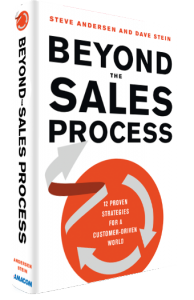Don’t Treat Clients Like Competitors! The Four Principles Of Trust-Based Selling
The words “trust” and “selling” are rarely mentioned in the same sentence, and some people feel that “trust-based selling” is an oxymoron. That says something about the relationships between sellers and their clients.
And it’s one reason that professional services firms don’t like the “S” word. We prefer euphemisms like “business development,” itself phrased in the passive voice as if to distance ourselves as far as possible from the crassness of commerce.
Trust-based Selling® is a principled way of approaching the commercial relationship between two parties. It is not a methodology, or a process model; it can coexist with existing methodologies or processes, as long as they are not manipulative or selfish.
People—including sophisticated clients—are overwhelmingly disposed to buy what they need to buy anyway from someone they trust. They trust people who are trustworthy— worthy of trust. Trustworthiness can be defined as behavior in accord with certain principles.
There are four such principles. Trust-based Selling means applying these principles across all stages of the sales process, all aspects of selling, and all characteristics of the client/professional relationship. Those principles are:
- Client focus for the sake of the client;
- Medium to long-term perspective;
- A habit of collaboration with the client; and
- Transparency in all things with the client.
In total, the principles of Trust-based Selling define an alternative to the heavily competition-based paradigm that defines most approaches to selling.
Let’s look first at each principle and its applications.
Client Focus For The Client’s Sake
A lot of what goes by the name “client focus” or “customer-centric” these days is a bit misleading. It is client-focused, all right—but in the same sense that a vulture is client-focused. The focus benefits the seller, not the buyer.
For example, loyalty programs are designed by paying very close attention to exactly what clients are looking for. CRM systems are designed (and sold) to allow very fine analyses of client behaviors and preferences. But in each case, their ultimate purpose is to enhance the bottom line of the seller – not the client.
The more refined and the more pervasive those measurements become, the more obvious it becomes to the client that “having his needs met” isn’t really about him at all. Instead, it’s about getting a greater share of his wallet. When we treat clients like we treat supply chains, they will feel like supply chains. They become means to the seller’s ends, rather than valued as ends in themselves.
Client vulture focus comes from the competitive paradigm: a semi-conscious belief that selling is a zero-sum game in which we compete with our clients.
In Trust-based Selling, client focus is practiced for the sake of the client. This doesn’t mean we are oblivious to the impact on us as sellers, but it does mean we approach clients in fundamentally different ways.
Medium to Long-Term Perspective
A lot of firms feel that their time perspective is reasonable—a bit short-term, perhaps, but not out of line. But look at behaviors.
Most approaches to professional selling are derived from industrial process models; they all have a few things in common. For one, they all have arrows, going from left to right. For another, the last step is almost always “closing,” followed by a feedback loop that says “go back to start and repeat.” That is a short-term model. It’s a transaction model whose end is closing. How much reward does your firm give to maintaining the relationship and how much to the sum of the year’s transactions?
Trust-based Selling focuses on the relationship, not the transaction. This longer-term focus takes care of much of the concern that some people have over the client focus principle. They need not worry that the client will take advantage of free services and bleed the provider dry.
In the long term, it is not just unfair but infeasible for the provider to lose money and the client to make money. In the long term, unequal relationships are simply unsustainable. The discipline of thinking long-term forces provider and client alike to think in terms of win-win or lose-lose, rather than the competitive paradigm of win-lose or lose-win.
A Habit of Collaboration
In most approaches to selling, the firm and client spend most of their time apart from each other. Firms spend the majority of their time imagining what the client might be thinking, how the client might react to our guess about what they might be thinking, and even more time developing elaborate “what-if” scenarios about how to respond to and control the client’s reactions to our guesses. What an elaborate substitute for simply asking clients what they think and talking about it!
Again, the paradigm underlying the usual belief is competition. We act like face time must be “managed,” as if client interactions are theatrical events which require staging and rehearsal.
Trust-based Selling demands collaboration. Significant selling acts are undertaken together. The next time you write a proposal, instead of doing it back at the office and emailing them files, what if you were to book the conference room or set up a videocon and actually write the proposal with the client – with each of you bringing to the process all the information needed to prepare the best proposal possible?
That is collaboration. It doesn’t guarantee you get the job. That’s not the point. The point is to help the client get the best possible proposal while you are secure in the belief that, if you behave consistently in a trustworthy manner, you will get more than your fair share of the business—in truth, much more.
Again, the resistance to collaboration comes from our internalized beliefs that somehow we are in competition with our clients.
Transparency in All Things
Being trustworthy means, above all else, having the client’s best interests at heart. One way to demonstrate this is to be open with them in all our affairs. Conversely, the biggest reason a client might suspect we don’t have their best interests at heart is a sense that we are hiding something. So – make sure your policies are right and then don’t hide anything.
In particular, be willing to discuss sensitive issues like pricing policies, reasons for discounts, leverage models, overhead models, staff assignment models, even billing rates. And be prepared to insist that if you share such information, the client will give you adequate time to do a good job of putting that information in its proper context.
Most firms find transparency the most radical principle of all: “There’s no way we’d tell them our billing rates. They’d freak out!” But they already know you have billing rates and make their own guesses without any context to understand them. Remember your feelings when you first heard your billing rate? Most likely initially you were overwhelmed with responsibility. Later, you started wondering where all that money went.
It’s the same with clients. The solution isn’t to keep secrets from them; it’s to explain reality to them. You gain three benefits by being transparent:
- You show you’ve got nothing to hide;
- You distinguish yourself by so doing;
- If your policies are weak, wrong or inconsistent, you’ll find out fast and have to fix them so they’re stronger—in which case, repeat the first two benefits.
Why do we resist transparency? Again, the culprit is the competitive mindset we bring to bear in selling. In this case, we’re afraid that if we share certain information, the “other party”—in this case, a potential client—will use that information against us, or we will lose advantage. That is the language of competition, not of trusted relationships.
We have to stop viewing our clients as our competitors. What we fear, we empower. If we treat our potential clients as competitors during the sales process, we will end up with competitors.
The cycle has to stop with us. We need to sell from principles of trust, rather than from principles that create more competitors in the very process of gaining clients. Trust begins in the sales process, if we have the courage to put it there.

 Most salespeople love athletic metaphors. For example, consider these well-known maxims:
Most salespeople love athletic metaphors. For example, consider these well-known maxims:
 I have known
I have known